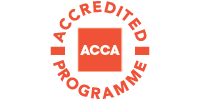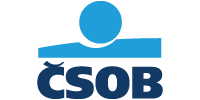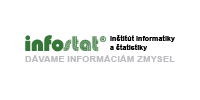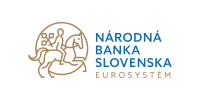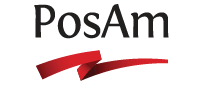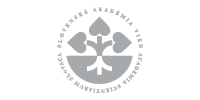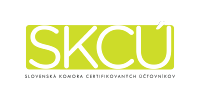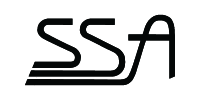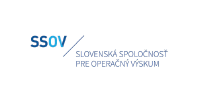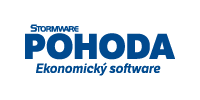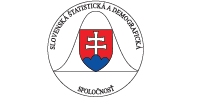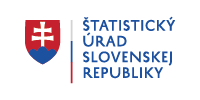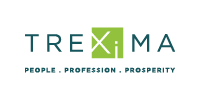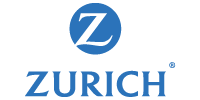Mission of the Journal
The Journal has an international reputation and it enables authors to present their researches relating to advancing and improving the practice, as well as understanding information systems of the organization. The Journal accepts theoretical, methodological and empirical contributions, i.e. the works that significantly contribute the thematic fields of the Journal, i.e. management information systems. It will provide enough space for original empirical and developmental researches.
The works can be presented as:
- Theoretical, clear and empirical researches on the conception, structure, development and usefulness of information systems being important for the progress of theory and practice.
- Paradigmatic, methodological aspects of design, development and implementation of information systems.
- Analysis and evolution of informatics strategy, policy and the application of information technologies to the social, economic, organizational and management aspects of the organization.
The International Scientific Journal of Management Information Systems is a biannual journal, with the pretension to affirm the integral, holistic view of management information systems.
The Journal will be issued twice a year - in May 25th and November 25th.
The language of publication is English.
Thematic Fields of the Journal
- Information technologies and management
- Information technologies and the organization
- Information systems and competitive advantages
- Strategic influence of management information systems
- Globalization of business and information technology
- Data, information and knowledge as resources of the organization and resource management
- Advancement of performances of the organization, processes and business by information technologies
- Information and knowledge management in the organization within the framework of strategic management
- Architecture and infrastructure of OLTP, ERP, CRM, SCM, and other systems
- Electronic business and net-oriented organizations
- Functionality, robustness and protection of information systems
- Information support of collaborative and team work
- Knowledge management, organizational study and organizational memory
- Data Warehousing
- Business intelligence
- Data mining
- Decision support systems
- Artificial intelligence
- Intelligent information systems
- Knowledge-based systems, fuzzy logic and fuzzy systems
- Data modeling
- Information systems architecture based on data bases and knowledge bases
- Data base management systems
- System analysis, design and development
- Information systems for virtual organizations
- Information systems for business process reengineering and system quality control
- Internet www applications
- Geographic Information Systems
- Human resources and information systems
- IT training
- Information systems and IT applications in marketing, sale, purchasing, planning, product management, human resources, logistics, accounting and finance, risk management, banking, insurance, public administration, trade, industry, and so on.
Publishers
University of Novi Sad
THE FACULTY OF ECONOMICS
Segedinski put 9-11
24000 Subotica
Serbia
University of Economics in Bratislava
THE FACULTY OF ECONOMIC INFORMATICS
Dolnozemska cesta 1
852 35 Bratislava
Slovakia
Editorial Board
Editor-in-Chief
- Pere Tumbas
The Faculty of Economics Subotica, University of Novi Sad, Serbia - Michal Fendek
The Faculty of Economic Informatics, University of Economics Bratislava, Slovakia
Editorial Board
- Józef Pociecha
The Faculty of Management, University of Economics, Cracow, Poland - Jaroslav Sedlaček
The Faculty of Economics and Administration, Masaryk University in Brno, Brno, Czech Republic - Josef Fiala
The Faculty of Economics, Technical University, Ostrava, Czech Republic - Ralf Ebeling
Wirtschaftswissenschaftliche Fakultät, Martin Luther Universität, Halle-Wittenberg, Germany - Ľudovít Molnár
Faculty of Informatics and Information Technologies, Slovak University of Technology, Bratislava, Slovakia - Michal Fendek
The Faculty of Economic Informatics, University of Economics, Bratislava, Slovakia - Ivan Brezina
The Faculty of Economic Informatics, University of Economics, Bratislava, Slovakia - Anna Šlosárová
The Faculty of Economic Informatics, University of Economics, Bratislava, Slovakia - Pere Tumbas
The Faculty of Economics Subotica, University of Novi Sad, Serbia - Nedjo Balaban
The Faculty of Economics Subotica, University of Novi Sad, Serbia - Zita Bošnjak
The Faculty of Economics Subotica, University of Novi Sad, Serbia - Tibor Kiš
The Faculty of Economics Subotica, University of Novi Sad, Serbia - Cvijan Krsmanović
Faculty of Technical Sciences, University of Novi Sad, Serbia - Nataša Krejić
Faculty of Sciences, University of Novi Sad, Serbia - Mária Raffai
Faculty of Engineering Sciences, Széchenyi István University, Győr, Hungary - Martin Lipičnik
Faculty of Logistics, Celje-Krško, University of Maribor, Slovenia
Submission of Papers
A copy of the scientific article should be forwarded to the following e-mail addresses: or . Scientific articles should be submitted in one hard copy, in case of e-mail connection failure at the given address:
University of Novi Sad
THE FACULTY OF ECONOMICS
Journal of Management Information Systems
Segedinski put 9-11
24000 Subotica
Serbia
or
University of Economics
THE FACULTY OF ECONOMIC INFORMATICS
Journal of Management Information Systems
Dolnozemska cesta 1
852 35 Bratislava
Slovakia
The authors of the manuscripts are expected to conform to the format and documentation requirements. Manuscripts of accepted articles will not be returned. The editors at the beginning of the manuscript indicate the dates of submission, revision and acceptance for publication of the paper.
The Reviewing Process
All scientific articles submitted for publication in Journal are double-blind reviewed by at least two academics appointed by the Editor's Board: one from the Editorial Board and one independent scientist of the language of origin – English. Reviewers stay anonymous. Authors will timely receive written notification of acceptance, remarks, comments and evaluation of their articles.
Manuscript Requirements
As a guide, articles should be no more than 5.000 words in length (16 A4 size pages). In case the paper exceeds the normal length, the Editors' consent for its publication is needed. Articles submitted for publication in Journal should include the research aim and tasks, with detailed methodology, presenting literature overview on the research object, substantiation of the achieved results and findings, conclusions and a list of references. Manuscripts should be arranged in the following order of presentation.
First page:
- Title (no more that 10 words),
- Subtitle (if any)
- Autobiographical note (the author's full name, academic affiliation, telephone, fax and e-mail address and full international contact). Respective affiliations and addresses of co-authors should be clearly indicated. Please include approximately 50 words of biographical information on each author of the submitted paper.
Second page:
- A self-contained abstract/summary/resume of up to 150 words, describing the research objective and its conclusion,
- Up to five keywords, which encapsulate the principal subjects covered by the article; and
- The ACM computing classification system, indexing all keywords according to the ACM classification (please, refer to http://www.acm.org/class/1998/)
Subsequent pages:
- Main body of the text with headings, footnotes, a list of references, appendices, tables, illustrations.
Technical Representation
Main body of the text should be printed one-sided, Arial font, 11pt, with 1,5 line spacing. Footnotes should be numbered consecutively in Arabic numerals. Headings must be short, clearly defined and numbered, except for Introduction and Conclusion.
All tables, graphs and diagrams are expected to back your research findings. They should be clearly referred to and numbered consecutively in Arabic numerals. They should be placed in the text at the appropriate paragraph (just after its reference). All figures must have captions. In all figures taken or adapted from other sources, a brief note to that effect is obligatory, below the figure.
An appropriate short and descriptive title and number should mark illustrations, middle size. Black-and-white prints of photographs, prepared for reproduction, high quality and high resolution (Internet graphics 300x 300 resolutions at least), computer generated, equal size, approximately double size of those that will be printed in the Journal. One sentence at least referring to the illustration is obligatory.
References
The ISI citations are a must for all contributors (please, refer to http://www.isinet.com). References to other publications must be in Harvard style. That is, shown within the text as the first author's name followed by a comma, year of publication and the quoted page number / all in round brackets, e.g. (Pressman, 2006, p.33). If there are more than one author, the following format is used: (Somerville, et al, 2006, p.333). At the end of the article a reference list in alphabetical order must be given as follows:
For books: author(s) surname, initials, (publication year), title, place of publication, publisher, e.g. Turban, E. (2002), Decision Support Systems and Intelligent Systems, 4th Edition, Eaglewood Cliffs: Prentice-Hall International Editions.
For chapter or article in the edited book: author(s) surname, initials, (publication year), title of the chapter, in ed (s) (editors), title of the book, place of publication, publisher, pp. e.g. Malhotra, Y. (2000) From Information Management to Knowledge Management: Beyond the ‘Hi-Tech Heidebound’ Systems. In: K. Srikantiah & Koenig eds, Knowledge Management for Information Professional, Medford N.J., Information Today Inc., pp. 37-61.
For journals: author(s) surname, initials, (year), "title", journal, volume, number, pages, e.g. Malhotra, Y. (2005) "Integrating Knowledge Management Technologies In Organizational Business Processes: Getting Real Time Enterprises To Deliver Real Business Performance", Journal Of Knowledge Management, Vol.2, No 3, pp. 7-28.
For Internet sources:
- Logistics Management: Marketing - http://www.logistics.co.hu (referred on 29/02/2006)
- Pressman R. (2006), Requirements Engineering, Journal of Management Information Systems, Vol.2, No 3, pp. 16-26. - http://www.logistics.co.hu (referred on 29/02/2006)
Copyright
Articles submitted to the Journal should be authentic and original contributions and should have never been published before in full text, nor be under consideration for any other publication at the same time. Authors submitting articles for publication warrant that the work is not an infringement of any existing copyright and will indemnify the publisher against any breach of such warranty. For use of dissemination and to ensure proper policing of use, papers and contributions become the legal copyright of the publisher unless otherwise agreed.
Proof
Authors are responsible for ensuring that all manuscripts (whether original or revised) are accurately typed before final submission. One set of proof will be sent to authors, if requested, before the final publication, which must be returned promptly.
